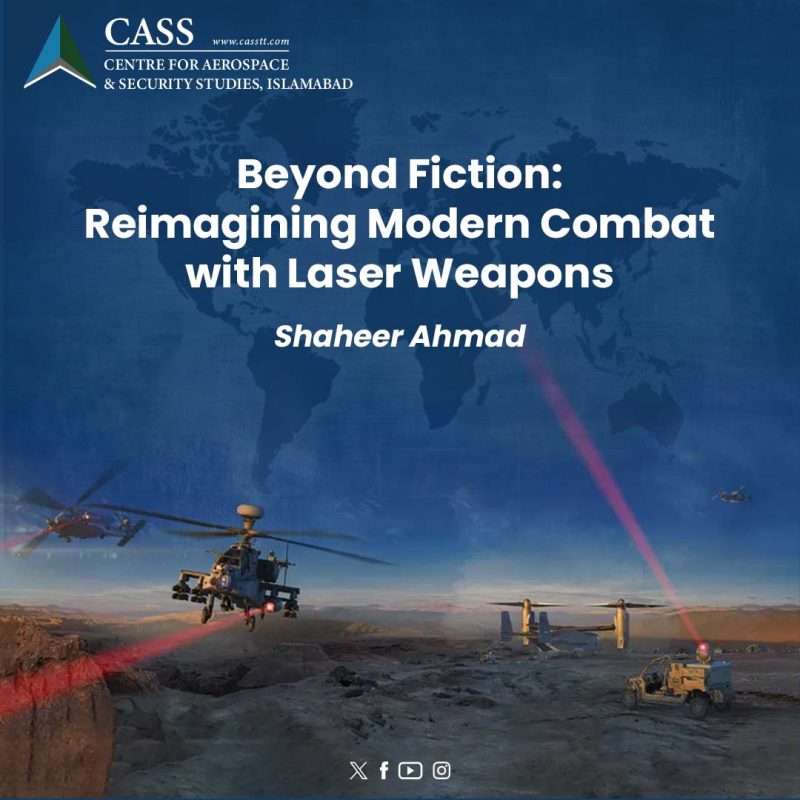‘It was sweeping round swiftly and steadily, this flaming death, this invisible, inevitable sword of heat.’ When these words by H.G. Wells appeared in his canonical War of the Worlds, laser weapons were nothing but a charming allure for science fiction geeks and conspiracy theorists. Nevertheless, significant strides in swarm drones flicking through skies and momentous breakthroughs in Directed Energy Weapons (DEWs), led strategic corridors to overtly clamour for this ‘inevitable sword of heat’ as a future weapon of choice.
Since their advent, laser weapons have changed the risk calculus in modern warfare. Stand alone or in conjunction with mainstream armament, these optical blazes can ably engage targets moving with breakneck speeds and damage or perforate a target’s structure with pinpoint accuracy.
Due to their lethality, militaries across the globe are pouring investments to shore up their laser capabilities. Having extensive experience in R&D of laser weapons since 1970, the United States is developing multiple laser apparatuses to undertake numerous military tasks including air defence, counter-drone measures and sheltering ground forces. The system known as Palletised High-Energy Laser (P-HEL) – the first DEW deployment for air defence – is positioned in the Middle East to shield American troops and maritime merchandise from Houthi potshots and hostile drones in the Red Sea. Reciprocally, Russia’s investments in laser weapons can be seen in fielding counter-drone and anti-satellite weapons: Kalina, Zadira, Peresvet and Sokol Eshelon, to name a few. Whereas, China is also taking sizable steps to out-innovate its counterparts in laser technology. Even if overstated, it has reportedly developed a laser capable of penetrating the ‘black barrier’ surrounding a hypersonic projectile. PLA scientists also claim that they have hit a significant breakthrough by developing laser cooling technology that, consequently facilitates incessant bombardment of the photon beam.
Besides battlefield prudence, laser weapons are a resource-conscious defence solution for modern militaries. Rather than draining costly ordnance, such as USD 2.1 million Standard Missile-2 (SM-2) and USD 2.0 million Evolved Sea Sparrow Missile, at a negligible-priced drone, a laser weapon can intercept these assets with precision and a trifling cost (USD 10 per shot). Moreover, unlike kinetic projectiles which carry a sizeable risk of collateral damage, laser weapons are insusceptible to such risks, as they can be absorbed or scattered in the atmosphere if they miss the target. These factors make laser weapons a viable solution to counter unmanned agents, target incoming projectiles, and potentially blind enemy satellites.
Analogous to other combat systems, laser weapons are not devoid of risks and challenges. A key challenge surrounding these weapons is provision of uninterrupted power to meticulously hit targets at long ranges. While laser beams need continuous power supplies, it also spawns an ample sum of heat surplus that requires a formidable sinking mechanism. In addition, these technologies require clear target sighting, stable platform and constant pointing of beam over rapidly maneuvering targets which is akin to hitting a dartboard while standing on a balance board. Concurrently, atmospheric factors including water droplets, fog and the globe’s curvature also degrade effectiveness of photon beams.
Other than technical complications, belligerent forces have ample room to overwhelm laser systems by forcing them to deal with different threat vectors simultaneously. This may strain the platform’s agility and precision to engage and hit multiple targets. Meanwhile, while considerable modernisation is done in super capacitor technologies which enable the laser weapons to fire charges without power degradation, generating and emitting ceaseless energy barrages in austere battle conditions remains a challenging task.
However, such associated pitfalls could be addressed through actionable approaches. Miniaturising the power supply mechanism for ground-based laser systems will allow their installation on agile armoured personnel carriers and infantry fighting vehicles. Relatedly, managing waste heat surplus by installing thermal storage management could improve their performance. In addition, holistically pairing laser shafts in conjunction with conventional armaments including counter drone technologies, gatling guns, mortars, and missile systems would make them an ancillary layer of defence, allowing reservation of advanced surface-to-air missiles for more pressing threats such as cruise and ballistic missiles. Countries having an amalgam of kinetic and non-kinetic weapons will have battlefield edge over those who have not.
Penetration of technology in every nook and cranny of modern warfare make laser weapons a go-to weapon in modern warfare. Unlike other ambitious projects like electromagnetic rail guns, laser weapons are not destined to be relegated to the R&D graveyard. From what has been observed in recent deployments of these weapons for air defence, anti-satellite and counter-drone purposes, laser weapons will be a lynchpin in modern military strategies. Given longer range, miniature logistical imprints and ‘infinite ammo,’ these photon cascades will provide militaries with peerless battlefield capabilities.
Shaheer Ahmad is a Research Assistant at the Centre for Aerospace & Security Studies, Islamabad. The article was first published in Modern Diplomacy. He can be reached at [email protected]





